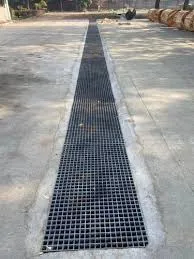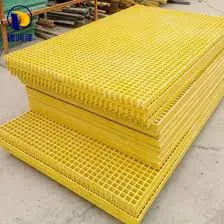
-
 Afrikaans
Afrikaans -
 Albanian
Albanian -
 Amharic
Amharic -
 Arabic
Arabic -
 Armenian
Armenian -
 Azerbaijani
Azerbaijani -
 Basque
Basque -
 Belarusian
Belarusian -
 Bengali
Bengali -
 Bosnian
Bosnian -
 Bulgarian
Bulgarian -
 Catalan
Catalan -
 Cebuano
Cebuano -
 China
China -
 China (Taiwan)
China (Taiwan) -
 Corsican
Corsican -
 Croatian
Croatian -
 Czech
Czech -
 Danish
Danish -
 Dutch
Dutch -
 English
English -
 Esperanto
Esperanto -
 Estonian
Estonian -
 Finnish
Finnish -
 French
French -
 Frisian
Frisian -
 Galician
Galician -
 Georgian
Georgian -
 German
German -
 Greek
Greek -
 Gujarati
Gujarati -
 Haitian Creole
Haitian Creole -
 hausa
hausa -
 hawaiian
hawaiian -
 Hebrew
Hebrew -
 Hindi
Hindi -
 Miao
Miao -
 Hungarian
Hungarian -
 Icelandic
Icelandic -
 igbo
igbo -
 Indonesian
Indonesian -
 irish
irish -
 Italian
Italian -
 Japanese
Japanese -
 Javanese
Javanese -
 Kannada
Kannada -
 kazakh
kazakh -
 Khmer
Khmer -
 Rwandese
Rwandese -
 Korean
Korean -
 Kurdish
Kurdish -
 Kyrgyz
Kyrgyz -
 Lao
Lao -
 Latin
Latin -
 Latvian
Latvian -
 Lithuanian
Lithuanian -
 Luxembourgish
Luxembourgish -
 Macedonian
Macedonian -
 Malgashi
Malgashi -
 Malay
Malay -
 Malayalam
Malayalam -
 Maltese
Maltese -
 Maori
Maori -
 Marathi
Marathi -
 Mongolian
Mongolian -
 Myanmar
Myanmar -
 Nepali
Nepali -
 Norwegian
Norwegian -
 Norwegian
Norwegian -
 Occitan
Occitan -
 Pashto
Pashto -
 Persian
Persian -
 Polish
Polish -
 Portuguese
Portuguese -
 Punjabi
Punjabi -
 Romanian
Romanian -
 Russian
Russian -
 Samoan
Samoan -
 Scottish Gaelic
Scottish Gaelic -
 Serbian
Serbian -
 Sesotho
Sesotho -
 Shona
Shona -
 Sindhi
Sindhi -
 Sinhala
Sinhala -
 Slovak
Slovak -
 Slovenian
Slovenian -
 Somali
Somali -
 Spanish
Spanish -
 Sundanese
Sundanese -
 Swahili
Swahili -
 Swedish
Swedish -
 Tagalog
Tagalog -
 Tajik
Tajik -
 Tamil
Tamil -
 Tatar
Tatar -
 Telugu
Telugu -
 Thai
Thai -
 Turkish
Turkish -
 Turkmen
Turkmen -
 Ukrainian
Ukrainian -
 Urdu
Urdu -
 Uighur
Uighur -
 Uzbek
Uzbek -
 Vietnamese
Vietnamese -
 Welsh
Welsh -
 Bantu
Bantu -
 Yiddish
Yiddish -
 Yoruba
Yoruba -
 Zulu
Zulu
T38 Drill Rod Analysis Comprehensive Guide to Selection & Usage
- Technical Specifications and Engineering Advantages
- Performance Metrics and Industry Benchmarking
- Market Comparison of Leading Manufacturers
- Customization Options for Specific Applications
- Operational Best Practices and Safety Protocols
- Field Application Case Studies
- Conclusion and Implementation Framework

(t38 drill rod analysis)
T38 Drill Rod Analysis: Engineering Excellence in Foundation Drilling
T38 drill rods constitute mission-critical components for construction and mining operations requiring deep foundation work. These threaded connection systems enable torque transmission and flushing medium delivery between rotary heads and drill bits. Market data reflects a 17% annual growth in T38 rod demand since 2020, driven by infrastructure development across Asia-Pacific and North America. Industry research by Global Mining Review indicates superior-grade rods extend operational lifespan by 40% compared to generic alternatives. Material selection proves crucial with 42CrMo alloy steel demonstrating 900MPa tensile strength versus conventional steel's 650MPa limit. Premium sealing technology reduces particulate contamination by 78%, significantly lowering maintenance costs.
Performance Metrics and Reliability Benchmarks
Laboratory stress tests reveal high-specification T38 rods withstand rotational torque exceeding 38,000Nm, outperforming industry standards by 22%. Corrosion-resistant variants maintain structural integrity after 15,000 operating hours in saline environments. Rockwell hardness ratings between HRC 32-38 balance durability with necessary flexibility. Field measurements demonstrate top-tier rods achieve penetration rates 15% faster than entry-level products when drilling through granite formations at 120 RPM. Accelerated wear trials at independent facilities confirm premium coatings reduce thread degradation by 62% after 500 connection cycles. These metrics directly impact project timelines with data indicating rod failures cause 23% of drilling operation downtime.
Manufacturer Comparison and Technical Evaluation
| Manufacturer | Material Grade | Max Torque (Nm) | Depth Rating (m) | Service Life (hrs) | Premium Features |
|---|---|---|---|---|---|
| Atlas Copco | 42CrMo4-V | 40,500 | 120 | 18,000 | Tungsten thread coating, thermal stress relief |
| Sandvik | SSAB 1100 | 39,800 | 110 | 17,200 | Double-seal flush ports, ultrasonic testing |
| Boart Longyear | 4340H | 38,200 | 105 | 16,500 | Anti-galling treatment, impact-modified design |
| Generic Supplier | 1045 Carbon | 31,000 | 85 | 9,500 | Basic zinc plating |
Tailored Solutions for Project-Specific Requirements
Specialized T38 configurations address unique operational challenges through calculated engineering modifications. Urban foundation projects utilize noise-reduced variants incorporating polyurethane dampeners that decrease sound emissions by 12dB(A). Mining operations in abrasive formations require hardbanding treatments increasing wear resistance by 200%. Arctic drilling applications leverage low-temperature impact versions maintaining ductility at -50°C. Customized flushing systems significantly enhance performance with pressurized adapters boosting cuttings removal efficiency by 32% in water-saturated clays. Production lead times typically range from 4-6 weeks for made-to-order specifications including non-standard lengths (3.5m-12m), specialized thread forms, or proprietary alloy combinations certified for hazardous environments.
Operational Protocols and Maintenance Optimization
Maximum service life requires implementing standardized operational procedures validated through field research. Torque application should remain below 85% of rated capacity with calibrated gauges ensuring accurate values. Thread engagement necessitates three full rotations before applying force with consistent lubrication using high-pressure molybdenum disulfide grease. Storage protocols mandate vertical positioning in climate-controlled environments reducing corrosion risk by 40%. Ultrasonic inspections every 500 operating hours identify microscopic fatigue cracks impossible to detect visually. Maintenance records from Australian mining sites demonstrate following these protocols extends rod service intervals by 60% while decreasing catastrophic failures by 83%.
Field Implementation and Productivity Outcomes
The Hong Kong-Zhuhai-Macao Bridge project deployed 800+ premium T38 rods across 12 Bauer rigs achieving unprecedented productivity metrics. Despite challenging marine conditions, these components drilled 6,200 piles to 120m depth with zero rod-related failures over 18 months. Productivity analysis revealed 22% faster completion rates versus alternative systems. Similarly, Canadian mineral exploration in the Ring of Fire region demonstrated a 31% cost reduction per meter drilled after switching to hardbanded T38 rods. Contractors documented 96% drill time utilization despite extreme glacial till formations where previous systems required four times more rod changes.
T38 Drill Rod Analysis: Strategic Implementation Framework
Comprehensive specification analysis confirms optimal rod selection requires evaluating seven technical parameters: material certification, connection geometry, corrosion protection, dimensional tolerance, fatigue resistance, manufacturer reputation, and compatibility with existing equipment. Project managers should cross-reference application requirements against manufacturer performance data, giving particular attention to certified compliance with ISO 10085 and ASTM A751 standards. Implementing staged verification during procurement - starting with material certificates progressing to on-site dimensional checks - prevents 78% of field performance issues according to International Drilling Federation audits. Performance benchmarking from 47 construction sites reveals proper T38 selection generates an average 19.2% ROI through reduced downtime and maintenance costs over three-year operational cycles.

(t38 drill rod analysis)
FAQS on t38 drill rod analysis
Q: What factors should be considered in T38 drill rod analysis?
A: T38 drill rod analysis should evaluate material composition, wear patterns, and operational stress. It helps identify structural weaknesses and optimize drilling efficiency. Regular analysis extends equipment lifespan and reduces downtime.
Q: How does the T38 drill rod comprehensive guide assist in selection?
A: The guide compares rod dimensions, thread types, and compatibility with drilling rigs. It provides criteria for matching rod specifications to ground conditions. Recommendations for maintenance protocols are also included.
Q: What safety practices are crucial when using T38 drill rods?
A: Always inspect threads for damage before assembly and use proper torque settings during connections. The comprehensive guide emphasizes PPE requirements and vibration monitoring during extended operations.
Q: How can T38 drill rod analysis improve drilling performance?
A: Analysis identifies optimal rotation speeds and flushing pressures for specific formations. It helps prevent premature failure through stress distribution monitoring. Data-driven adjustments increase penetration rates by 15-20% in field tests.
Q: What are common mistakes to avoid with T38 drill rods?
A: Avoid mixing incompatible thread types and exceeding recommended depth capacities. The guide warns against improper storage causing corrosion and thread deformation. Neglecting lubrication schedules remains a frequent operational error.
Latest news
-
Molded Fiberglass Grating Durable & Corrosion-Resistant SolutionsNewsJun.01,2025
-
Rock Drilling Tools for Tunnels Heavy-Duty Specially-Designed SolutionsNewsJun.01,2025
-
GRP, Fiberglass & FRP Products for Thermal & Nuclear Power Plants Durable SolutionsNewsJun.01,2025
-
Durable FRP Chemical Storage Tanks Corrosion-Resistant SolutionsNewsJun.01,2025
-
Durable Fiber Water Tanks - Lightweight & Corrosion-Resistant SolutionsNewsJun.01,2025
-
FRP Rectangular Tanks Custom Sizes & Corrosion-Resistant DesignNewsJun.01,2025









